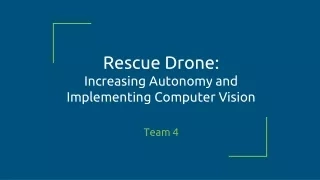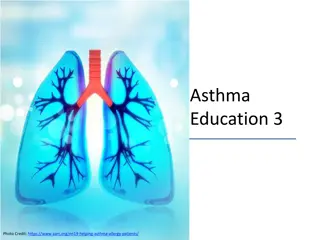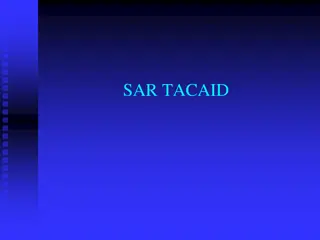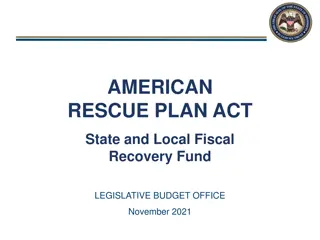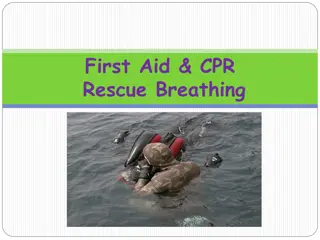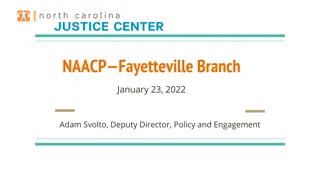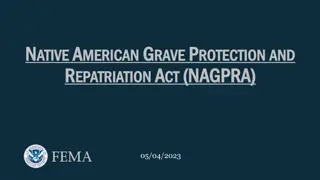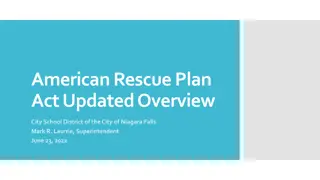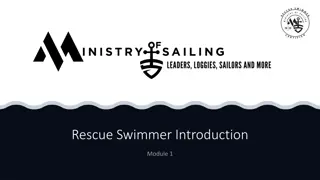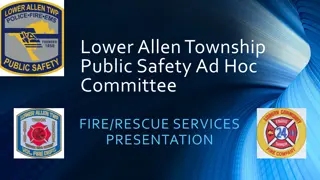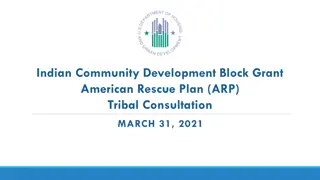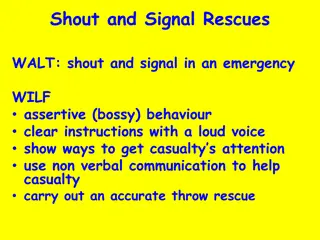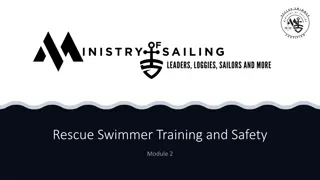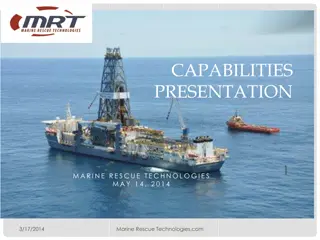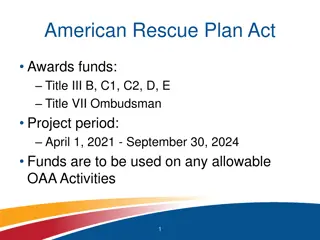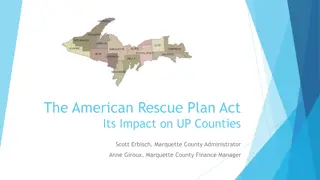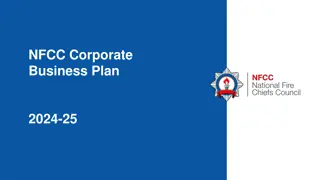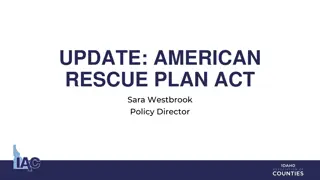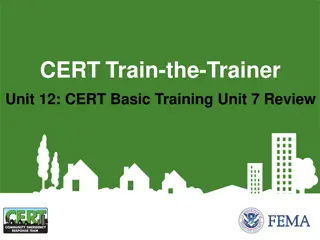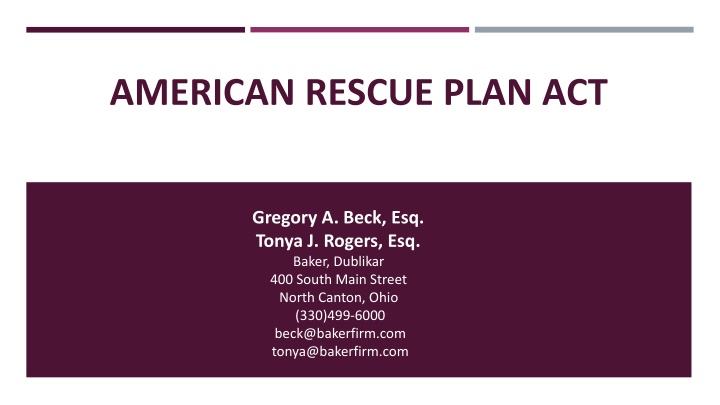
American Rescue Plan Act Overview
The American Rescue Plan Act outlines guidelines for the use of funds to address the public health emergency and its economic impacts, including assistance to various sectors and workers. It details permissible expenditures, such as premium pay for essential workers and investments in infrastructure. The Act also specifies eligibility criteria for fund transfers to entities like non-profit organizations and government units.
Download Presentation

Please find below an Image/Link to download the presentation.
The content on the website is provided AS IS for your information and personal use only. It may not be sold, licensed, or shared on other websites without obtaining consent from the author. If you encounter any issues during the download, it is possible that the publisher has removed the file from their server.
You are allowed to download the files provided on this website for personal or commercial use, subject to the condition that they are used lawfully. All files are the property of their respective owners.
The content on the website is provided AS IS for your information and personal use only. It may not be sold, licensed, or shared on other websites without obtaining consent from the author.
E N D
Presentation Transcript
AMERICAN RESCUE PLAN ACT Gregory A. Beck, Esq. Tonya J. Rogers, Esq. Baker, Dublikar 400 South Main Street North Canton, Ohio (330)499-6000 beck@bakerfirm.com tonya@bakerfirm.com
AMERICAN RESCUE PLAN CODIFIED: 43 USC 603 (1) Funds shall only be used to cover costs incurred beginning March 3, 2021 through December 31, 2024 to respond to the public health emergency or its negative economic impacts, including assistance to households, small businesses and nonprofits, or aid to impacted industries such as tourism, travel, and hospitality; a) to respond to workers performing essential work during the COVID-19 public health emergency by providing premium pay to eligible workers that are performing such essential work, or by providing grants to eligible employers that have eligible workers who perform essential work; b) for the provision of government services to the extent of the reduction in revenue, due to the COVID-19 public health emergency relative to revenues collected in the most recent full fiscal year prior to the emergency; or c) to make necessary investments in water, sewer, or broadband infrastructure.
AMERICAN RESCUE PLAN CODIFIED: 43 USC 603 (2) Funds may not be used for deposit into any pension fund. (3) Funds may be transferred to a private nonprofit organization (an organization in which no member, founder, contributor or individual benefits from the earnings, has a voluntary board, has an accounting system or designated fiscal agent, and practices nondiscrimination), a public benefit corporation involved in the transportation of passengers or cargo, or a special-purpose unit of State or local government. (4) Funds may be transferred to the State of Ohio.
ELIGIBLE USES 4 PRIMARY CATEGORIES 1. To respond to the public health emergency or its negative economic impacts, including assistance to households, small businesses, and nonprofits, or aid to impacted industries such as tourism, travel, and hospitality; 2. To respond to workers performing essential work during the COVID 19 public health emergency by providing premium pay to eligible workers; 3. For the provision of government services to the extent of the reduction in revenue due to the COVID 19 public health emergency relative to revenues collected in the most recent full fiscal year prior to the emergency; and 4. To make necessary investments in water, sewer, or broadband infrastructure.
OBJECTIVES PURSUANT TO TREASURY DEPARTMENTS INTERIM FINAL RULE Take action to decrease the spread of COVID-19 and bring the pandemic under control Provide support for costs incurred in addressing public health and economic challenges resulting from the pandemic, including premium pay to essential workers Replace lost revenue due to COVID-19, helping to provide needed services and avoid cuts or layoffs Lay the foundation for a strong, equitable economic recovery through immediate economic stabilization for households and businesses and addressing the systemic public health and economic challenges that have contributed to more severe impacts of the pandemic among low-income communities and people of color
AMERICAN RESCUE PLAN AND CARES ACT The Cares Act: provided relief to political subdivisions to mitigate the impact of the pandemic The American Rescue Plan: forward thinking, seeks to stabilize local communities post pandemic Treasury Department s Summary of the Goal of the ARP: To provide fast and direct economic assistance for American workers, families, small businesses, and industries The question becomes: what can you provide for the community?
AMERICAN RESCUE PLAN: TIMELINE Must register with OBM by September 4, 2021 Funds must be used to cover costs incurred by the recipient between March 3, 2021, and December 31, 2024 o Funds may be used to provide assistance for economic harm experienced by households, businesses and individuals prior to March 3, 2021, including: rental arrears, premium pay, revenue loss, investments in water, sewer and broadband relating to the COVID-19 public health emergency Funds must be obliged by December 31, 2024 Funds must be expended by December 31, 2026
CATEGORY 1: RESPONDING TO THE COVID-19 PANDEMIC
CATEGORY 1: RESPONDING TO THE COVID-19 PANDEMIC PERMISSIBLE USES: COVID-19 Mitigation and Prevention Medical Expenses Behavioral Health Care Public Health and Safety Staff Expenses to Improve the Design and Execution of Health and Public Health Programs
CATEGORY 1: RESPONDING TO NEGATIVE ECONOMIC IMPACTS Permissible Uses: Assistance to Unemployed or Underemployed Workers Assistance to Households rental assistance, utility assistance, etc Small Businesses and Non-profits grants, rental assistance, lost revenue, overhead costs, Rehiring Government Staff Aid to Impacted Industries tourism, hotels, bars and restaurants QCTs Qualified Census Tract
CATEGORY 1: RESPONDING TO NEGATIVE ECONOMIC IMPACTS Impermissible Uses: General infrastructure General economic development or workforce development. Contributions to rainy day funds, fees or insurance costs associated with the issuance of new debt Satisfaction of any obligation arising out of a settlement agreement or judgment
CATEGORY 1: RESPONDING TO THE COVID-19 PANDEMIC PERMISSIBLE USES Combatting Adverse Impact on low-income communities In recognition of the disproportionate impacts of the COVID-19 pandemic on health outcomes in low-income and Native American communities, the Treasury will presume that certain types of services are eligible uses for geographic areas that are disproportionately impacted (if supported by specific disproportionate public health or economic outcomes). These services include: Funding community health workers to help with access to health services Funding public benefits navigators as to applications for public benefits or services Housing services to support healthy living environments Remediation of lead paint or other lead hazards Evidence-based community violence intervention programs
CATEGORY 1: RESPONDING TO NEGATIVE ECONOMIC IMPACTS Qualified Census Tract (QCT) Definition: 50 percent of households with incomes below 60 percent of the Area Median Gross Income (AMGI) or have a poverty rate of 25 percent or more. HUD Website: Presumed eligible uses in QCT areas: o Funding community health workers to help community members access health services and services to address the social determinants of health; o Housing services to support healthy living environments and neighborhoods conducive to mental and physical wellness; o Remediation of lead paint or other lead hazards to reduce risk of elevated blood lead levels among children; and o Evidence-based community violence intervention programs to prevent violence and mitigate the increase in violence during the pandemic
QCT Interactive Map HUD Website: Interactive QCT Map
CATEGORY 3: REVENUE LOSS
CATEGORY 3: REVENUE LOSS General Revenue: includes revenues collected and generated from underlying economy, and also captures a range of tax revenues. Recipients should sum across all revenue streams to minimize the burden and present a more accurate representation of the overall impact. Need not rely on financial reporting. Includes intergovernmental transfers between State and Local governments. Excludes: revenue generated by utilities and insurance trusts; all intergovernmental transfers from the Federal government. Calculation of Loss: Comparison of actual revenue to a counterfactual trend representing what could have been expected to occur in the absence of the pandemic. May use a growth adjustment of either 4.1 percent per year or the recipient s average annual revenue growth over the three fiscal years prior. Should be calculated on an entity-wide basis. Time Period: Recipients are permitted to calculate the extent of reduction in revenue as of four points in time: December 31, 2020; December 31, 2021; December 31, 2022; and December 31, 2023. This approach recognizes that some recipients may experience lagged effects of the pandemic on revenues.
CATEGORY 3: REVENUE LOSS Utility Revenue Excluded from Calculating Revenue Loss Utility Revenue Defined: [g]ross receipts from sale of utility commodities or services to the public or other governments by publicly-owned and controlled utilities. This includes revenue from operations of publicly-owned and controlled: (1) water supply systems (2) electric power systems (3) gas supply systems (4) public mass transit systems All Commercial Activity Included: Except for these four (4) types of utilities, revenues from all commercial-type activities of a recipient s government (e.g., airports, educational institutions, lotteries, public hospitals, public housing, parking facilities, port facilities, sewer or solid waste systems, and toll roads and bridges) are covered by the Interim Final Rule s definition of general revenue.
CATEGORY 3: REVENUE LOSS Formula for Calculating Reduction in Revenue: A reduction in a recipient s General Revenue equals: o Max {[Base Year Revenue* (1+Growth Adjustment) 12 ] - Actual General Revenuet ; 0} o Where: Base Year Revenue is General Revenue collected in the most recent full fiscal year prior to the COVD-19 public health emergency. Growth Adjustment is equal to the greater of 4.1 percent (or 0.041) and the recipient s average annual revenue growth over the three full fiscal years prior to the COVID-19 public health emergency. n equals the number of months elapsed from the end of the base year to the calculation date. Actual General Revenue is a recipient s actual general revenue collected during 12-month period ending on each calculation date. Subscript t denotes the calculation date.
CATEGORY 3: REVENUE LOSS Reduction in Revenue Presumed: Recipients do not need to prove that the reduction was a direct result of the COVID-19 public health emergency. If use of the formula reveals a diminution in actual revenue, the presumption is the reduction was the result of the COVID-19 public health emergency. May Not Rely on Pre-Pandemic Projections: Treasury is disallowing use of projections to demonstrate reduced revenue. Estimating Revenue Shortfall: Recipients may use their average annual revenue growth rate in the three full fiscal years prior to the public health emergency for use in the formula. Data Used: Recipients should use their own data sources to calculate general revenue. Where audited data is not available, recipients are not required to obtain audited data. Treasury expects all information submitted to be complete and accurate.
CATEGORY 3: REVENUE LOSS The Interim Final Rule gives recipients broad latitude to use funds for the provision of government services to the extent of reduction in revenue. Government Services: can include, but are not limited to, maintenance of infrastructure or pay-go spending for building new infrastructure, including roads; modernization of cybersecurity, including hardware, software, and protection of critical infrastructure; health services; environmental remediation; school or educational services; and the provision of police, fire, and other public safety services. Prohibited Use of Funds: paying interest or principal on outstanding debt, replenishing rainy day or other reserve funds, or paying settlements or judgments would not be considered provision of a government service.
CATEGORY 2: PREMIUM PAY
CATEGORY 2: PREMIUM PAY Purpose: The purpose of the premium pay is to allow recipients to remunerate essential workers for the elevated health risks faced during the public health emergency. This section is intended to respond to workers performing essential work if it addresses heightened risk to workers who must physically be present at a jobsite and the costs associated with illness were hardest to bear financially. Definition: work involving regular in-person interactions or regular physical handling of items that were also handled by others. Telework: Telework is expressly excluded Emphasis: The Interim Final Rule emphasizes the need for recipients to prioritize premium pay for lower income workers
CATEGORY 2: PREMIUM PAY Sectors include: Healthcare Public health and safety Public health and safety Childcare Education Sanitation Transportation Food production and Services Sectors deemed critical to protect the health and well-being of residents.
CATEGORY 2: PREMIUM PAY Examples of workers eligible for Premium Pay: Staff at nursing homes, hospitals, and home care settings; Workers at farms, food production facilities, grocery stores, and restaurants; Janitors and sanitation workers; Truck drivers, transit staff, and warehouse workers; Public health and safety staff; Childcare workers, educators, and other school staff; and Social service and human services staff.
CATEGORY 2: PREMIUM PAY Premium pay that would increase a worker s total pay above 150% of the greater of the state or county average annual wage requires specific justification for how it responds to the needs of these workers. May not be used to reduce or substitute for a worker s normal earnings. Any third-party employers of essential workers are eligible. Third-party contractors who employ essential workers are eligible for grants, the selection of which is at the discretion of recipients. May be provided retroactively for work already performed by essential workers following the onset of the COVID-19 pandemic. Interim Final Rule places emphasis on prioritizing retrospective premium pay where possible in recognition that many essential workers have not yet received additional compensation for work performed during the shutdown.
CATEGORY 4: WATER, SEWER, AND BROADBAND INFRASTRUCTURE
CATEGORY 4: INFRASTRUCTURE Permissible Categories: Water, Sewer, and Broadband o Water Infrastructure must be related to water quality Ineligible: General Infrastructure
CATEGORY 4: WATER, SEWER, AND BROADBAND INFRASTRUCTURE Water and Sewer Eligible Uses: Generally aligns with types or categories of projects that would be eligible for financial assistance through the: o Environmental Protection Agency s Clean Water State Revolving Fund (CWSRF) or o Drinking Water State Revolving Fund (DWSRF). Interim Final Rule also refers to the EPA Drinking Water and Clean Water State Revolving Funds (SRFs) for the categories of projects and activities that are eligible for funding.
CATEGORY 4: WATER, SEWER, AND BROADBAND INFRASTRUCTURE Stormwater Management Infrastructure Eligibility: Per the EPA s Overview of Clean Water State Revolving Fund Eligibilities, Stormwater projects must have a water quality benefit. Can transfer funds to a water district to be used for Township benefit Extension of sewer Road Repairs and Upgrades: Road repairs and upgrades are eligible so long as they are components of and directly related to an eligible water or sewer project or infrastructure project. o Example: a recipient could use Funds to repair or re-pave a road following eligible sewer repair work beneath it.
CATEGORY 4: WATER, SEWER, AND BROADBAND INFRASTRUCTURE CWSRF Eligible Projects: Stormwater Management o Nonpoint Source of Pollution (NPS) controls identify sources of pollution in runoff water and identifying plants to prevent the polluted runoff water from reaching water sources o Gray Infrastructure: controls for flooding, sediment controls o Green Infrastructure: green roofs, green streets, green walls, infiltration basins, permeable pavement, replacement of gray infrastructure with green infrastructure Landfills & Contaminated Sites: clean up and restoration
CATEGORY 4: WATER, SEWER, AND BROADBAND INFRASTRUCTURE Nonpoint Source of Pollution (NPS) Definition: NPS pollution is caused by rainfall or snowmelt moving over and through the ground. As the runoff moves, it picks up and carries away natural and human-made pollutants, finally depositing them into lakes, rivers, wetlands, coastal waters and ground waters. Nonpoint source pollution can include: Excess fertilizers, herbicides and insecticides from agricultural lands and residential areas Oil, grease and toxic chemicals from urban runoff and energy production Sediment from improperly managed construction sites, crop and forest lands, and eroding streambanks Salt from irrigation practices and acid drainage from abandoned mines Bacteria and nutrients from livestock, pet wastes and faulty septic systems
CATEGORY 4: WATER, SEWER, AND BROADBAND INFRASTRUCTURE Green Infrastructure: Definition: Water management techniques that protect, restore or simulate the natural hydrology. Green infrastructure can range in scale from site design approaches such as green roofs and pervious pavement to regional planning approaches such as conservation of large tracts of open land. Criteria: o Improvement in source water quality and/or quantity o Maximization of reliance on natural hydrologic functions Examples o Buffer strips to capture sediment and slow flow o Green roofs, green streets, and green walls o Rainwater harvesting collection, storage, management, and distribution systems o Infiltration basins o Constructed wetlands, including surface flow and subsurface flow (e.g., gravel) wetlands o Bioretention/bioswales (e.g., rain gardens, tree boxes) o Permeable pavement o Wetland/riparian/shoreline creation, protection, and restoration o Establishment/restoration of urban tree canopy o Replacement of gray infrastructure with green infrastructure including purchase and demolition costs
CATEGORY 4: WATER, SEWER, AND BROADBAND INFRASTRUCTURE Broadband Infrastructure Eligible projects: Projects must reliably deliver minimum speeds of 100 Mbps download and 100 Mbps upload. In cases where it is impracticable due to geography, topography, or financial cost to meet those standards, projects must reliably deliver at least 100 Mbps download speed, at least 20 Mbps upload speed, and be scalable to a minimum of 100 Mbps download speed and 100 Mbps upload speed. Goal: Prioritizing deployment of infrastructure that will bring service to households or businesses that are not currently serviced by a wireline connection that reliably delivers at least 25 Mbps download speed and 3 Mbps of upload speed. Businesses refers to all non-residential use, including schools or libraries. o Unserved or underserved households or businesses need not be the only households or businesses in the service area receiving funds so long as the project s target encompasses that goal. Cybersecurity: Modernization of cybersecurity, including hardware, software, and protection of critical infrastructure, as part of provision of government services up to the amount of revenue lost due to the public health emergency. Digital Literacy Training: digital literacy training and other programs that promote access to the Internet
CATEGORY 4: WATER, SEWER, AND BROADBAND INFRASTRUCTURE Broadband Infrastructure: Middle-mile Projects: Funds may be used for middle-mile projects but Treasury Dept has put emphasis on projects that achieve last-mile connections o Middle Mile: the network connection between the last mile and greater Internet. For instance, in a rural area, the middle mile would likely connect the town's network to a larger metropolitan area where it interconnects with major carriers o Last-Mile Connections: the final leg of a connection between a service provider and the customer Prioritize support for broadband networks owned, operated by, or affiliated with local governments, non-profits, and co-operatives providers with less pressure to turn profits and with a commitment to serving entire communities.
OTHER ELIGIBLE USES: PUBLIC SAFETY WORKING TO REDUCE AND RESPOND TO INCREASED VIOLENCE DURING THE COVID-19 PUBLIC HEALTH EMERGENCY All communities: rehiring police officers and other public servants to restore law enforcement and courts to their pre-pandemic levels Communities Facing Increased Violence or Difficulty Accessing Services to Mitigate Violence Hiring law enforcement officials even above pre-pandemic levels or paying overtime where the funds are directly focused on advancing community policing strategies in those communities experiencing an increase in gun violence associated with the pandemic Community Violence Intervention (CVI) programs, including capacity building efforts at CVI programs like funding and training additional intervention workers Additional enforcement efforts to reduce gun violence exacerbated by the pandemic, including prosecuting gun traffickers, dealers, and other parties contributing to the supply of crime guns, as well as collaborative federal, state, and local efforts to identify and address gun trafficking channels Investing in technology and equipment to allow law enforcement to more efficiently and effectively respond to the rise in gun violence resulting from the pandemic Such expenditure of funds must be related and reasonably proportional to extent and type of harm experienced
INELIGIBLE USES Nonpermitted Uses: Replenish budget stabilization fund, rainy day fund, or similar reserve account Pay interest or principal on outstanding debt Pension deposits Non-federal matching General Infrastructure

